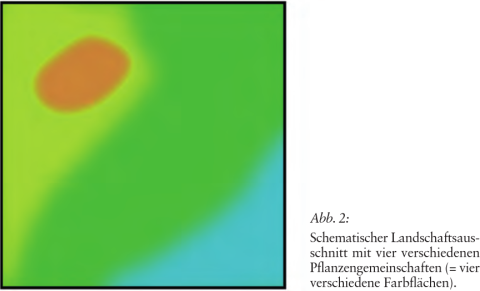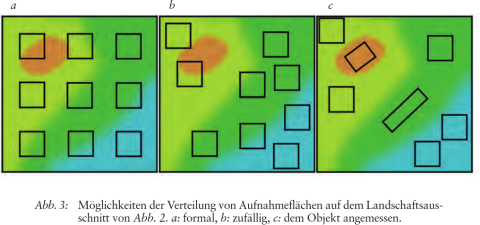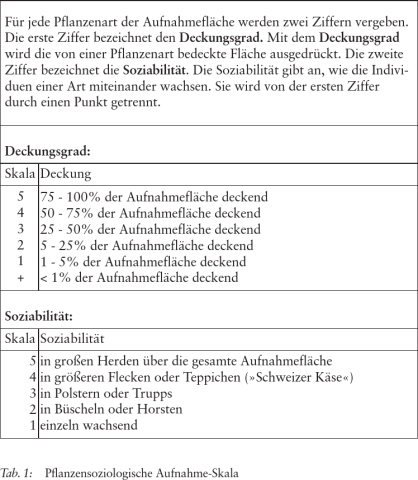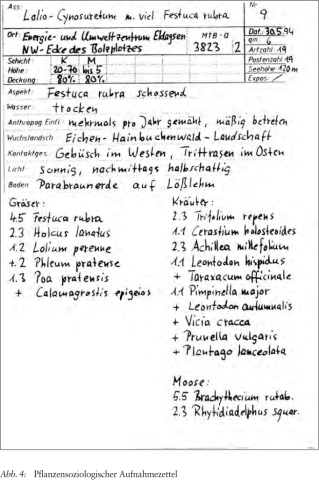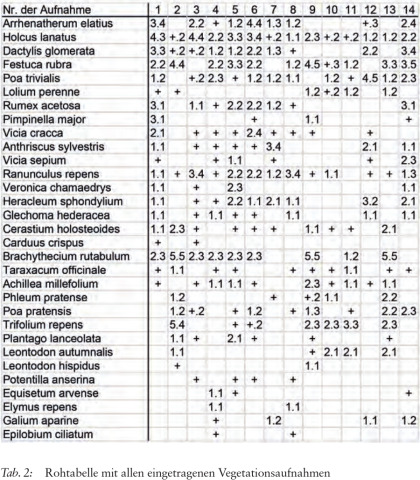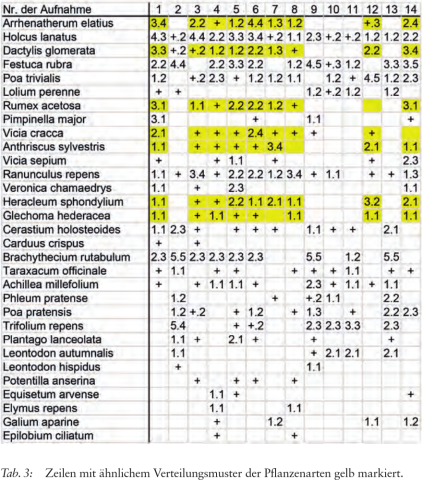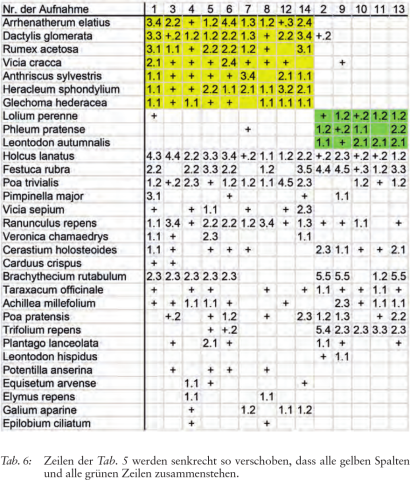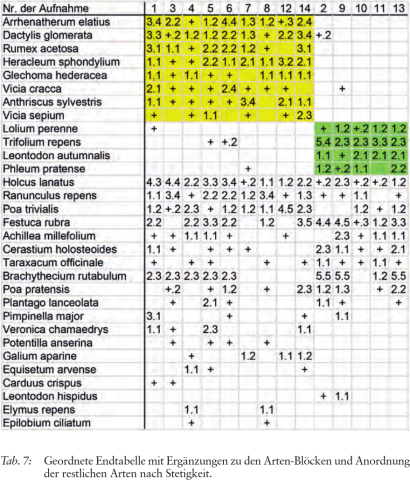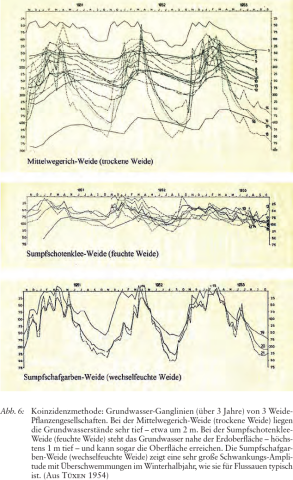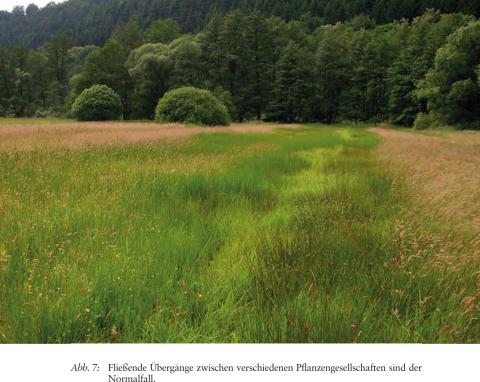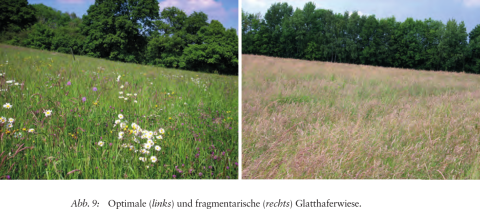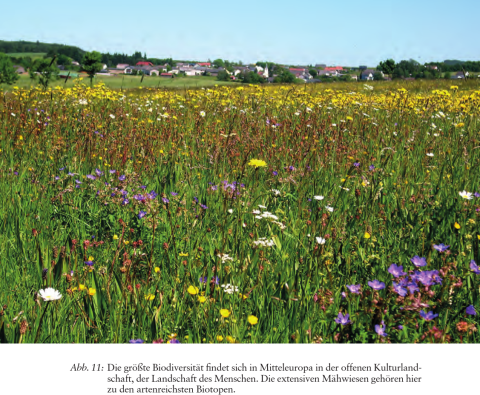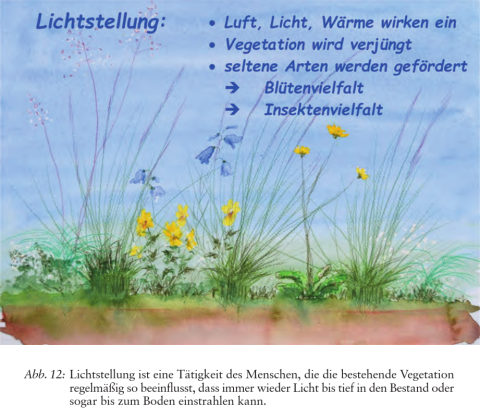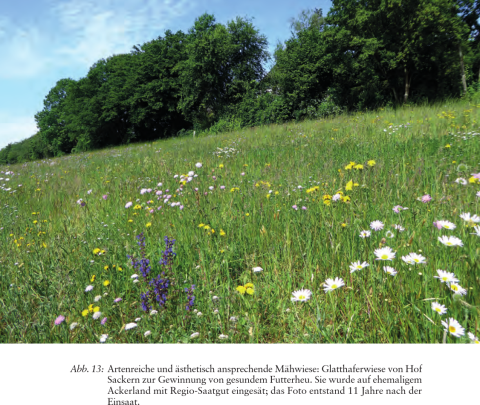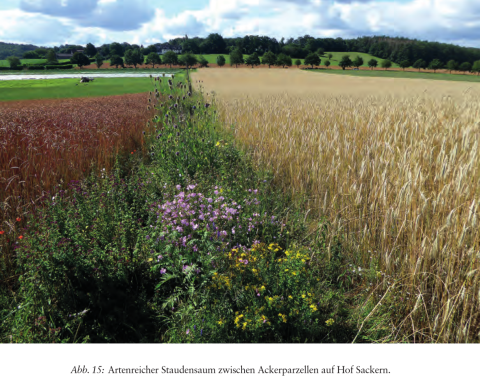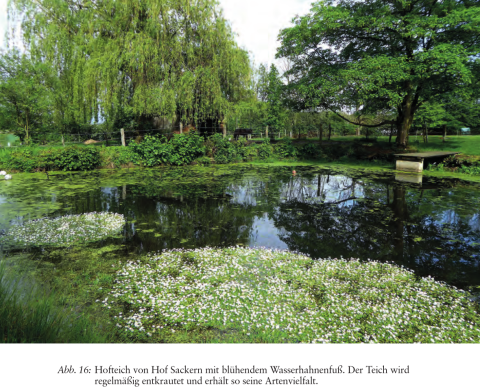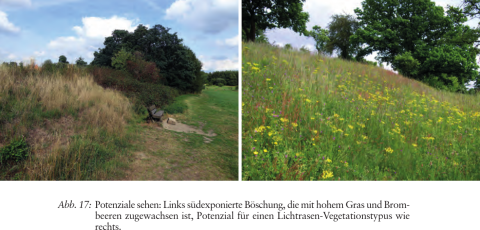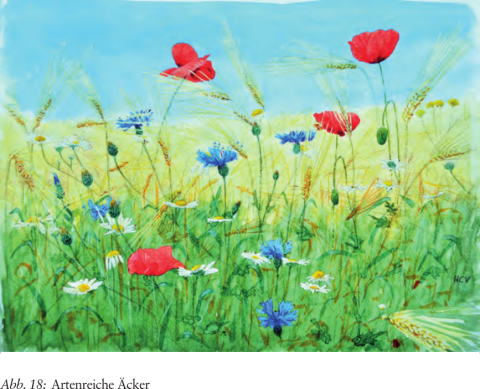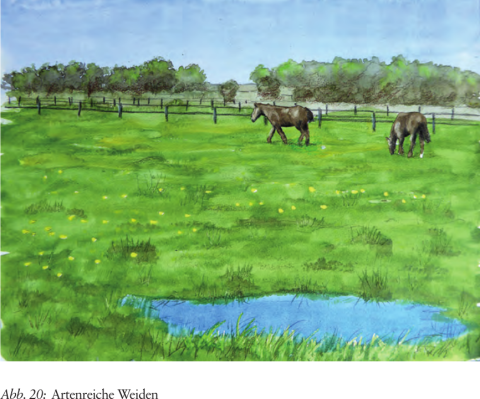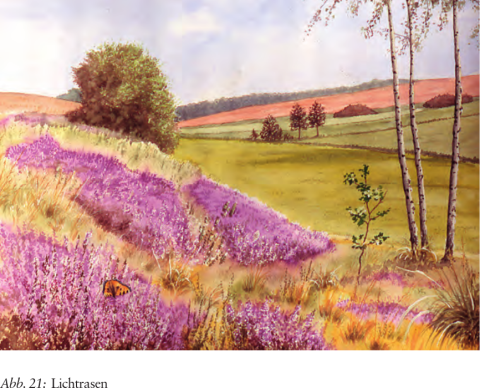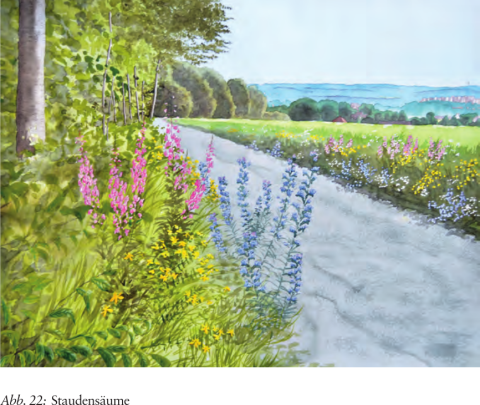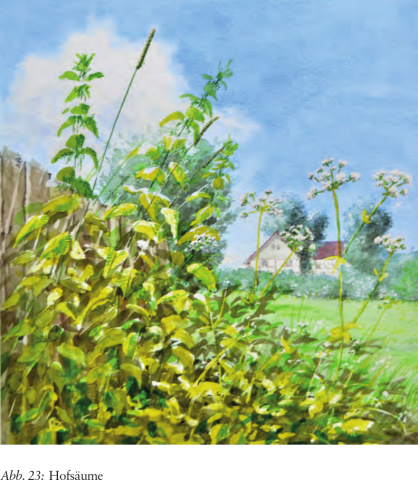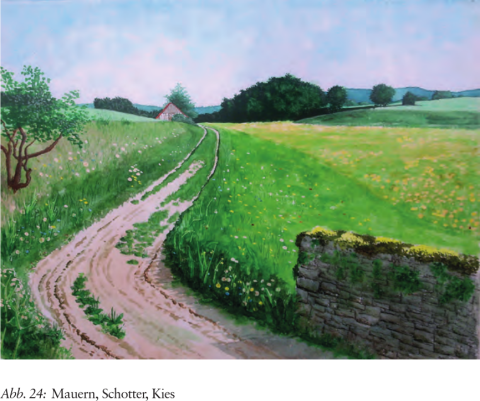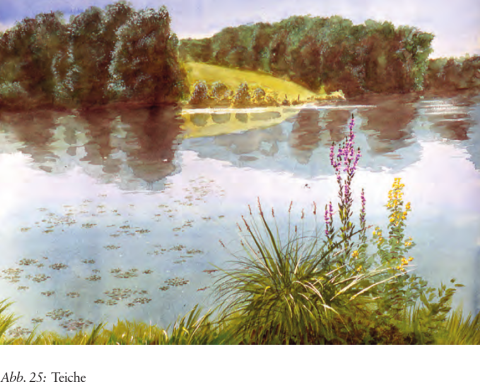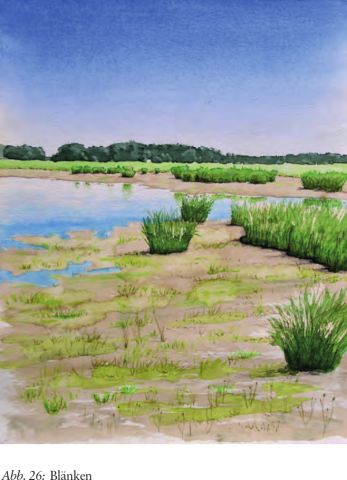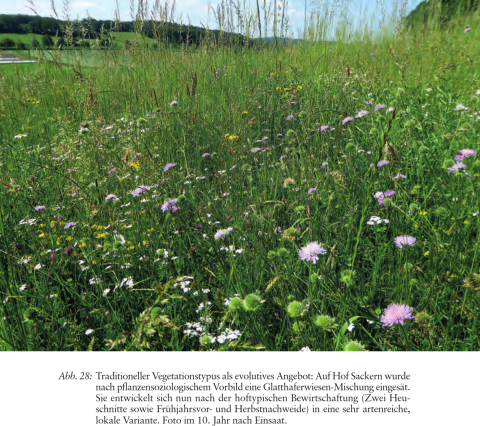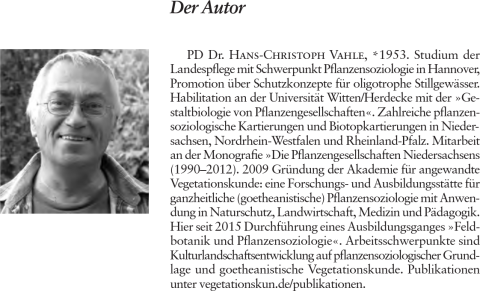Der Wert des typologischen Denkens in der Pflanzensoziologie – seine Bedeutung für Landschaftsentwicklung und Landwirtschaft
Export Article Citation as
- Download price : €6
Abstract:
Starting from the botanical concept of plant type, the question is raised whether the concept of type can also be applied to plant communities. This is possible with the help of plant sociology, which has developed a comprehensive methodology for this purpose. The individual steps of this procedure are described and brought into relation to typological thinking, whereby many cross connections to Goethe’s method of research become apparent. These procedural steps are:
– Selection of vegetation sections as the basic phenomena to be worked on
– Vegetation inventory: floristic analysis of each of these vegetation sections
– Tabular work: comparison of the combinations of species in the vegetation inventories, identifying similarities and differences
– Grouping the vegetation inventories with similar combinations of species into »vegetation types«
Special attention is paid to the so-called »tabular work«. With this instrument, the phenomena (the individual vegetation inventories) are arranged in such a way that the principles (the vegetation types) appear as if by themselves. The vegetation types thus obtained can then be structured hierarchically – analogous to botanical systematics – on the basis of similar combinations of species. Just as a vegetation type (= plant community) has a typical combination of species, it also has typical site conditions: a typical soil, a typical water balance, a typical microclimate, etc. Thus it becomes possible to read landscapes, in that the plant communities picture all these site forces. However, one difficulty extends throughout the whole methodology: namely that vegetation types are very pliant, i.e. they converge spatially and temporally. In this way what appears to be a problem in clearly identifying vegetation types turns out, on the other hand, to be an advantage when it comes to applying phytosociology in the context of landscape development concepts. For in the plasticity of vegetation types also lies an evolutionary potential. The presentation therefore concludes with reflections on how the typological approach of phytosociology can and must be used for a forward-looking agriculture that is concerned with health, vitality and diversity, which in turn are based on healthy, lively and diverse vegetation.
References
- Barkman, J. J. (1990): Controversies and perspectives in plant ecology and vegetation science. Phytocoenologia 18(4): 565–589. Berlin, Stuttgart
- Braun-Blanquet, J. (1928): Pflanzensoziologie. Grundzüge der Vegetationskunde. In: Schoenichen, W. (Hrsg.): Biologische Studienbücher 7 (330 S.). Berlin
- Braun-Blanquet, J. (1964): Pflanzensoziologie. Grundzüge der Vegetationskunde (865 S.). 3. neu bearb. Aufl., Berlin, Wien, New York
- Carson, R. (1963): Der stumme Frühling. Nachdruck 2019 (443 S.) München
- Clements, F. E. (1916): Plant succession; an analysis of the development of vegetation. Washington: Carnegie Institution of Washington. Online verfügbar unter http://dx.doi.org/10.5962/bhl.title.56234
- oates, M., Ferris, J. (1994): The radiatively driven natural convection beneath a floating plant layer. Limnol. Oceanogr. 39(5): 1186–1194
- Dierschke, H. (1994): Pflanzensoziologie. Grundlagen und Methoden (683 S.). Stuttgart
- Dierschke, H., Hülbusch, K. H., Tüxen, R. (1973): Eschen-Erlen-Quellwälder am Südwestrand der Bückeberge bei Bad Eilsen, zugleich ein Beitrag zur pflanzensoziologischen Arbeitsweise. Mitteilungen der Floristisch-soziologischen Arbeitsgemeinschaft N. F. 15/16: 153–164. Todenmann, Göttingen
- Dierssen, K. (1990): Einführung in die Pflanzensoziologie (Vegetationskunde) (241 S.). Darmstadt
- Ellenberg, H. (1956): Aufgaben und Methoden der Vegetationskunde. In: Walter, H. (Hrsg.): Einführung in die Phytologie, Bd. 4, Teil 1 (136 S.). Stuttgart
- Ellenberg, H. (1996): Vegetation Mitteleuropas mit den Alpen (1096 S.). 5. Aufl., Stuttgart
- Florin, J.-M. (2014): Ganzheitliche Landschaftsgestaltung. In: Hurter, U. (Hrsg.): Agrikultur für die Zukunft: 136–148. Dornach/CH
- Fuchs, N. (2014): Evolutive Agrarkultur (92 S.). Darmstadt
- Gleason, H. A. (1927): Further Views on the Succession Concept. Ecology 8(3): 299–326. DOI: 10.2307/1929332
- Goethe, J. W. von (1795): Über einen aufzustellenden Typus zur Erleichterung der vergleichenden Anatomie. In: Naturwissenschaftliche Schriften Bd. 1(2). Weimarer Ausgabe WA II, 8, S. 5–58
- Hommel, P. W. F. M., de Waal, R. W. (2003): Boomsoort bepaalt bostype op verzuringsgevoelige bodem. Stratiotes 26: 3–19
- Idel, A., Beste, A. (2018): Vom Mythos der klimasmarten Landwirtschaft – oder warum weniger vom Schlechten nicht so gut ist. Hrsg. M. Häusling, MdEP, Europabüro Hessen (76 S.). 2. Aufl., Wiesbaden
- Kesel, R., Gödeke, T. (1996): Wolffia arrhiza, Azolla filiculoides, Lemna turionifera und andere wärmeliebende Pflanzen in Bremen – Boten eines Klimawandels? Abhandlungen des Naturwissenschaftlichen Vereins zu Bremen 43(2): 339–362
- Kunz, W. (2017): Artenschutz durch Habitatmanagement. Der Mythos von der unberührten Natur (292 S.). Weinheim
- Kunze, H. (2005): Plastizität und Beharrlichkeit des Staubblatt-Typus am Beispiel der Asclepiadiodeae (Apocynaceae s.l.). In: Harlan, V. (Hrsg.): Wert und Grenzen des Typus in der botanischen Morphologie. Wissenschaftliche Schriftenreihe des Instituts für Evolutionsbiologie und Morphologie der Universität Witten/Herdecke: 181–187. Nümbrecht-Elsenroth
- Larcher, W. (1994) Ökophysiologie der Pflanzen (394 S.). 5. Aufl., Stuttgart
- Larsen, L. (1991): Nature as therapy: an assessment of schizophrenic patients’ visual preferences for institutional outdoor environments. MSc thesis, University of Guelph (134 pp.). Guelph
- Maderthaner, R. (2002): Lebensqualität und Kulturlandschaft. https://homepage.univie.ac.at/Rainer.Maderthaner/Vortraege/LebensqualitaetundKulturlandschaft.pdf
- Mooney, P., Hoover, R. (1996): The design of restorative landscapes for Alzheimer’s patients. In: Wagner, C. (Ed.): Proceedings 1996 Annual Meeting of the American Society of LandscapeArchitects. American Society of Landscape Architects, Washington, D. C., pp. 50–55
- Petrarca (2019): http://www.petrarca.info/warum-landschaft
- Preising, E. (1978): Rote Liste der Pflanzengesellschaften Niedersachsens. Mskr. Hannover
- Preising, E., Vahle, H.-C., Brandes, D. & al. (1990–2012): Die Pflanzengesellschaften Nieder- sachsens. Bestandsentwicklung, Gefährdung und Schutzprobleme. Naturschutz und Landschaftspflege in Niedersachsen 20 (1–10). Hannover
- Rosslenbroich, B. (2020): Eigenschaften des Lebendigen. Schritte zu einem eigeständigen Begriff vom Organismus. In: Rosslenbroich, B. (Hrsg.): Perspektiven einer Biologie der Freiheit. Autonomieentwicklung in Natur, Kultur und Landschaft, S. 519–592. Stuttgart
- Temperton, V. M., Buchmann, N., Buisson, E. & al. (2019): Step back from the forest and step us to the Bonn Challenge: How a broad ecological perspective can promote successful landscape restoration. Restoration Ecology 27(4): 705–719
- Trepl, L. (1988): Gibt es Ökosysteme? Landschaft + Stadt 20(4): 176–185. Stuttgart
- Trepl, L. (1994): Geschichte der Ökologie (280 S.). 2. Aufl., Weinheim
- Tüxen, R. (1954): Pflanzengesellschaften und Grundwasserganglinien. Angewandte Pflanzensoziologie 8: 64–98. Stolzenau/Weser
- Tüxen, R. (1958): Die Eichung von Pflanzengesellschaften auf Torfprofiltypen. Ein Beitrag zur Koin- zidenzmethode in der Pflanzensoziologie. Angewandte Pflanzensoziologie 15: 131–141. Stolzenau/Weser
- Tüxen, R. (1965): Wesenszüge der Biozönose. Gesetze des Zusammenlebens von Pflanzen und Tieren. In: Tüxen, R. (Hrsg.): Biosoziologie. Berichte des Internationalen Symposiums der IVV Stolzenau/Weser 1960: 10–13. Junk, Den Haag
- Tüxen, R. (1974): Die Pflanzengesellschaften Nordwestdeutschlands (207 S.). 2. neu bearb. Aufl., Lieferung 1. – Lehre
- Vahle, H.-C. (1990): Grundlagen zum Schutz der Vegetation oligotropher Stillgewässer in Nord- westdeutschland. Naturschutz und Landschaftspflege in Niedersachsen 22: 157 pp. (Dissertation)
- Vahle, H.-C. (1999): Die Optimierung des eigenen Standortes durch das Isoeto-Lobelietum. Mitteilungen des badischen Landesvereins für Naturkunde und Naturschutz N. F. 17(2): 281–291. Freiburg/Brsg.
- Vahle, H.-C. (2001): Das Konzept der potentiellen Kulturlandschafts-Vegetation. Tuexenia 21: 273–292. Göttingen
- Vahle, H.-C. (2004): Lichtrasen. Zum landschaftsökologischen, ästhetischen und landwirtschaftlichen Verständnis von Magerrasen. Natur und Landschaft 79(1): 10–17
- Vahle, H.-C. (2007): Die Pflanzendecke unserer Landschaften. Eine Vegetationskunde (384 S.). Stuttgart
- Vahle, H.-C., Hildebrand, N., Weber, G. (2020): Die 10 Biotope für die lebendige Vielfalt der Kulturlandschaft (144 S.). Broschüre im Selbstverlag. Witten
- Van der Maarel, E. (1975): The Braun-Blanquet approach in perspective. Vegetatio 30(3): 213– 219. The Hague


